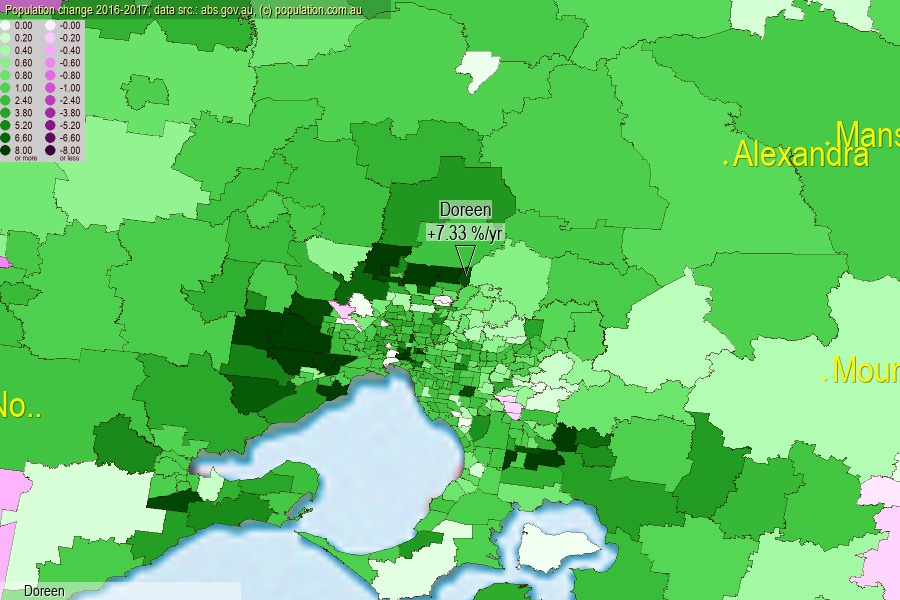 population.com.au
population.com.auLast official estimated population of Doreen (as Statistical Area Level 2) was 23 398 people (on 2017-06-30)[2]. This was 0.09% of total Australian population and 0.364% of VIC population. Area of Doreen is 14.50 km², in this year population density was 1 613.66 p/km² . If population growth rate would be same as in period 2016-2017 (+7.33%/yr), Doreen population in 2025 would be 41 191. [0]



Click to enlarge. Doreen is located in the center of the images.
Population [people], population density [p./km²] and population change [%/year] [2]
View borders » (new window) [4]
[2001-2002] +19.96 %/Yr.
[2002-2003] +45.80 %/Yr.
[2003-2004] +71.53 %/Yr.
[2004-2005] +42.35 %/Yr.
[2005-2006] +37.34 %/Yr.
[2006-2007] +51.85 %/Yr.
[2007-2008] +24.48 %/Yr.
[2008-2009] +33.88 %/Yr.
[2009-2010] +31.71 %/Yr.
[2010-2011] +21.48 %/Yr.
[2011-2012] +22.79 %/Yr.
[2012-2013] +17.03 %/Yr.
[2013-2014] +12.91 %/Yr.
[2014-2015] +9.39 %/Yr.
[2015-2016] +11.00 %/Yr.
[2016-2017] +7.33 %/Yr.
[0] Calculated with linear interpolation from officially estimated population
[1] Read more about SA2 and Australian Statistical Geography Standard (ASGS) on abs.gov.au
[2] Population data from Australian Bureau of Statistics (Population and density: 2017; change: 2016-2017)
[3] Digital Boundaries: Australian Statistical Geography Standard (ASGS) 2016.
[4] Border coordinates are simplifyed using Ramer-Douglas-Peucker algorithm.